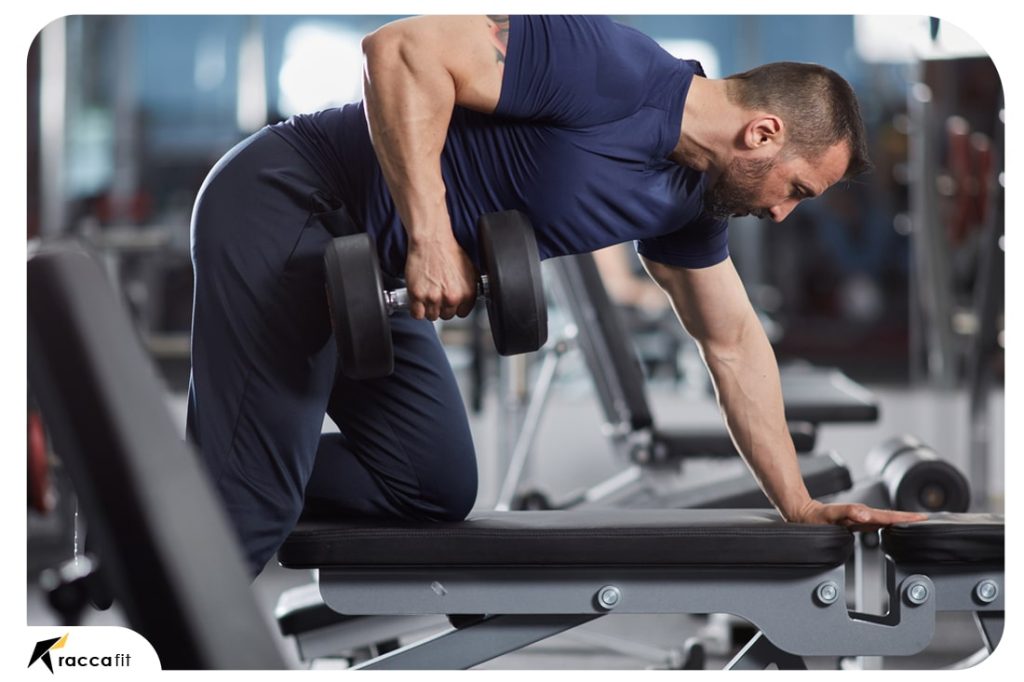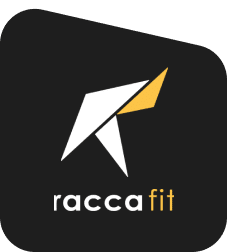Welcome to the realm of horizontal pull exercises, where we will go deeply into the complexities of developing a strong and well-defined back in addition to covering the fundamentals. This essay includes something for everyone, regardless of your level of experience with exercise.
Understanding horizontal pull exercises, their importance, and how they may change your fitness regimen is the first step on your path to a stronger and more defined back.
The Importance of a Strong Back in Horizontal Pull Exercises
The unsung hero of your body is your back. It serves as the structural basis for all of your motions and is essential in maintaining the health of your spine. Maintaining excellent posture, avoiding back discomfort, and doing well in sports and daily activities all depend on having a strong back.

Types of Horizontal Pull Exercises
- Barbell Rows: Barbell rows are a classic strength-building exercise. They target the latissimus dorsi (lats), trapezius, and rhomboid muscles, helping you achieve a wide, V-shaped back. To maximize the effectiveness of this exercise, experiment with different grips and bar types, such as the T-bar handle, to diversify your workout.
- Dumbbell Rows: Dumbbell rows are excellent for isolating each side of your back. This exercise is great for addressing muscle imbalances and can be easily adjusted for beginners or advanced lifters by varying the weight. Ensure proper form by keeping your back straight and pulling the weight towards your hip, not your chest.
- T-Bar Rows: T-Bar rows add an interesting twist to standard rowing routines. They entail employing a T-Bar machine, a v-bar handle, or landmine attachment. This exercise targets the lower lats and is an excellent technique to enhance back thickness.
- Cable Rows: Cable rows provide constant tension on your back muscles throughout the exercise. They come with various attachments like wide and narrow grips, enabling you to customize your workout to focus on different areas of your back.
Mastering Proper Form and Technique in Horizontal Pull Exercises
Mastering the correct form is crucial in horizontal pull exercises to prevent injuries and achieve desired results. When performing these exercises, it’s important to maintain a strong mind-muscle connection, ensuring that the right muscles are being engaged throughout the movement.
Here are some key points to consider:
- Keep your back straight and chest up.
- Pull through your elbows, not your wrists.
- Squeeze your shoulder blades together at the peak of the movement.
- Maintain a controlled tempo for both the concentric (lifting) and eccentric (lowering) phases of the exercise.
Learn More: Fire Hydrant Exercise: A Fun and Effective Workout Move
Benefits of Horizontal Pull Exercises
The benefits of including horizontal pull exercises in your routine go beyond just building a beautiful back. These exercises offer a wide range of advantages that can enhance your overall fitness and well-being.
Improved Posture
The most obvious advantage is better posture. Exercises that include horizontal pulls help you stand and sit with your shoulders back and chest out by toning the upper back muscles. This improves your attractiveness while lowering your risk of neck and back ache.
Enhanced Strength
Increased strength for a number of different tasks results from having a strong back. A robust back is useful whether you’re an athlete, weekend warrior, or someone who likes regular activities.
Increased Muscle Definition
Horizontal pull workouts are not just about strength; they also help to a well-defined, sculpted back. The V-shaped back is a symbol of power and health, and these workouts are the key to getting it.
Reduced Risk of Injury
A strong back serves as a protection for your spine. By keeping your back muscles healthy and strong, you lower your risk of common ailments related with bad posture and weak back muscles.

Incorporating Horizontal Pull Exercises into Your Workout Routine
Integrating horizontal pull exercises into your workout routine is straightforward. Aim to work your back at least twice a week, allowing enough time for recovery between sessions. Here’s a sample workout plan to help you get started:
- Day 1:
- Barbell Rows – 3 sets of 8-10 reps
- Dumbbell Rows – 3 sets of 10-12 reps
- Cable Rows – 3 sets of 10-12 reps
Learn More: Hip Flexor Exercises with Bands: Supercharge Your Flexibility!
- Day 4:
- T-Bar Rows – 3 sets of 8-10 reps
- Dumbbell Rows – 3 sets of 10-12 reps
- Pull-Ups – 3 sets of as many reps as possible
Consistency is key when it comes to building a strong back. By following a structured workout plan and progressively increasing the intensity, you can achieve remarkable results.
Common Mistakes to Avoid
To ensure your success with horizontal pull exercises, avoid common blunders that might stymie your progress and lead to injury. Some hazards to avoid are as follows:
Using Improper Form and Technique
One of the most common mistakes is sacrificing form for heavier weights. It’s essential to prioritize proper form and technique over lifting heavier loads. Ensure your back is straight, and you’re using a full range of motion.
Overloading with Excessive Weight Too Soon
Progression is vital, but overloading with excessive weight too soon can lead to injury. Gradually increase the weight, ensuring that you can complete the desired number of repetitions with proper form.
Swinging the Weights
Swinging the weights during horizontal pull exercises diminishes the effectiveness of the exercise. This momentum can take the focus away from your back muscles and increase the risk of injury.
Relying on Momentum Rather than Muscle Engagement
Momentum is the enemy of effective resistance training. Rather than relying on momentum to lift the weight, focus on engaging the targeted muscles throughout the entire range of motion.
Horizontal Pull Exercises for Different Fitness Levels
Horizontal pull workouts may be adapted to your fitness level. Here’s how to approach them depending on your experience:
Beginners
It’s imperative to start with the fundamentals if you’re new to horizontal pull exercises. Inverted rows are a great bodyweight exercise that can be used as an introduction. Prior to beginning weighted exercises, perfect proper form.
Intermediate
Intermediate individuals can start incorporating barbell or dumbbell rows into their routine. Focus on perfecting your form and gradually increase the weight as you become more comfortable with the exercises.
Advanced
Advanced lifters can take their horizontal pull workouts to the next level. Incorporate T-bar rows, cable rows, and pull-ups to create an intense and challenging back workout. By experimenting with different grips and angles, you can target various areas of your back for comprehensive development.
Versatile Equipment and Variations for Horizontal Pull Exercises
The beauty of horizontal pull exercises is their adaptability. You can perform many of these exercises with minimal equipment, making them suitable for home or gym workouts.
While bodyweight exercises and simple equipment like dumbbells can suffice, gyms offer a wide array of machines and attachments that can diversify your workouts. These include the use of v-bar handles, landmine attachments, and different types of cable row machines.
Learn More: Bird dog exercise: Comprehensive guide and video tutorial
Horizontal Pull Exercises for Home Workouts
Working out at home has become increasingly popular, and horizontal pull exercises can be adapted for this setting. Here are some options for your home workout routine:
Bodyweight Rows
Bodyweight rows may be performed with just a solid horizontal bar or TRX straps. These work your back muscles quite well, and you can change the resistance by altering the angle of your torso.
Dumbbell Rows
Dumbbell rows can be easily adapted for home workouts. Invest in a set of dumbbells, and you’ll have a versatile piece of equipment that allows you to perform a range of horizontal pull exercises.
By integrating these exercises into your home workout routine, you can continue to strengthen your back and achieve your fitness goals, even when you can’t make it to the gym.
The Role of Horizontal Pull Exercises in Bodybuilding
Bodybuilders understand the significance of a well-developed back. Horizontal pull exercises play a pivotal role in achieving the coveted V-shaped physique. These exercises contribute to the aesthetics and symmetry of the body, making them a cornerstone of bodybuilding.
A well-developed back complements other muscle groups, creating a balanced and visually striking physique. It is a testament to the dedication and hard work that bodybuilders put into their training.
Safety Tips for Horizontal Pull Exercises to Prevent Injuries
Injury prevention should always be a top priority in any fitness regimen. To minimize the risk of injuries while performing horizontal pull exercises, consider the following safety tips:
Warm-Up Adequately
Before you dive into your back workout, ensure you warm up properly. A 10-15 minute warm-up that includes light cardio, dynamic stretches, and mobility exercises can help prepare your muscles for action. Warming up increases blood flow, making your muscles more pliable and less prone to injury.
Stretch Your Back and Shoulders
Spend a few minutes stretching your back and shoulders after your warm-up. Stretching raises flexibility and lowers the possibility of injury. Target the muscles in the upper back and shoulders by using exercises like the Cat-Cow stretch, shoulder rolls, and hanging stretches.
Pay Attention to Posture and Breathing
Proper posture is essential during horizontal pull exercises. Keep your back straight, chest up, and engage your core. This not only maximizes the effectiveness of the exercise but also reduces the risk of strain on your lower back.
Breathing is another crucial aspect of injury prevention. Focus on controlled, deep breaths throughout each repetition. Exhale during the concentric phase (when you’re lifting the weight) and inhale during the eccentric phase (when you’re lowering it). This helps stabilize your core and maintain proper form.
Incorporate Core-Strengthening Exercises
A strong core supports your back during exercises. Include core-strengthening exercises in your routine to enhance stability and reduce the risk of back injuries. Exercises like planks, Russian twists, and leg raises can help you develop a strong and stable core.
By following these safety tips and paying close attention to your form and technique, you can reduce the risk of injury and ensure a safe and








